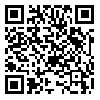Volume 11, Issue 1 (Spring & Summer 2025)
KJES 2025, 11(1): 72-102 |
Back to browse issues page
Download citation:
BibTeX | RIS | EndNote | Medlars | ProCite | Reference Manager | RefWorks
Send citation to:



BibTeX | RIS | EndNote | Medlars | ProCite | Reference Manager | RefWorks
Send citation to:
Alaminia Z, Boroon A S, Tadayon M. New insights into the geology and ore genesis of the Aregijeh and Emarat Pb-Zn deposits, South Arak: Constraints from mineralogy, texture, and fluid inclusions. KJES 2025; 11 (1) :72-102
URL: http://gnf.khu.ac.ir/article-1-2935-en.html
URL: http://gnf.khu.ac.ir/article-1-2935-en.html
1- Ferdowsi University of Mashhad , alaminia@um.ac.ir
2- , University of Isfahan
2- , University of Isfahan
Abstract: (328 Views)
The Aregijeh and Emarat Pb-Zn deposits are hosted by clastic-carbonate sequences of the Early Cretaceous in south Arak. These deposits formed in the northern Sanandaj-Sirjan zone within an intracontinental rift setting. The main stratabound Pb-Zn mineralization horizon occurs in the upper part of thick-bedded Orbitolina-bearing limestones (Aptian-Albian), underlying shales and marls with intercalated thin-bedded limestones. Mineralization appears as banded, brecciated, laminated, veined, and disseminated comprising sphalerite, galena, and pyrite, with minor chalcopyrite, and Ag-Sb-Cu sulfosalts, accompanied by quartz, dolomite, calcite, barite, and siderite as gangue minerals. Silicification and carbonatization represent the dominant alteration types. The unusual abundance of fine-grained quartz, anhedral dolomite, and framboidal pyrite provides evidence of early diagenetic stages, while mineralization was completed by the precipitation of coarse-grained quartz, euhedral dolomite, siderite, and hydrothermal sulfides. Ore formation occurred in a submarine anoxic environment shortly after sedimentation. Microthermometric results of fluid inclusions reveal similar homogenization temperature ranges (125–207°C in Aregijeh vs. 130–217°C in Emarat) in both deposits. However, calculated salinities (7.59–13.72 wt.% NaCl equiv. in Aregijeh vs. 7.59–19.84 wt.% NaCl equiv. in Emarat) are higher in the Emarat deposit. Textural relationships, mineralogical properties, and fluid inclusion data suggest mineralization formed from basinal brines during diagenesis in a reduced environment, consistent with Irish-type deposits.
Type of Study: Original Research |
Subject:
Economic Geology
Received: 2025/04/4 | Accepted: 2025/05/14 | Published: 2025/08/25
Received: 2025/04/4 | Accepted: 2025/05/14 | Published: 2025/08/25
Send email to the article author
| Rights and permissions | |
 |
This work is licensed under a Creative Commons Attribution-NonCommercial 4.0 International License. |



